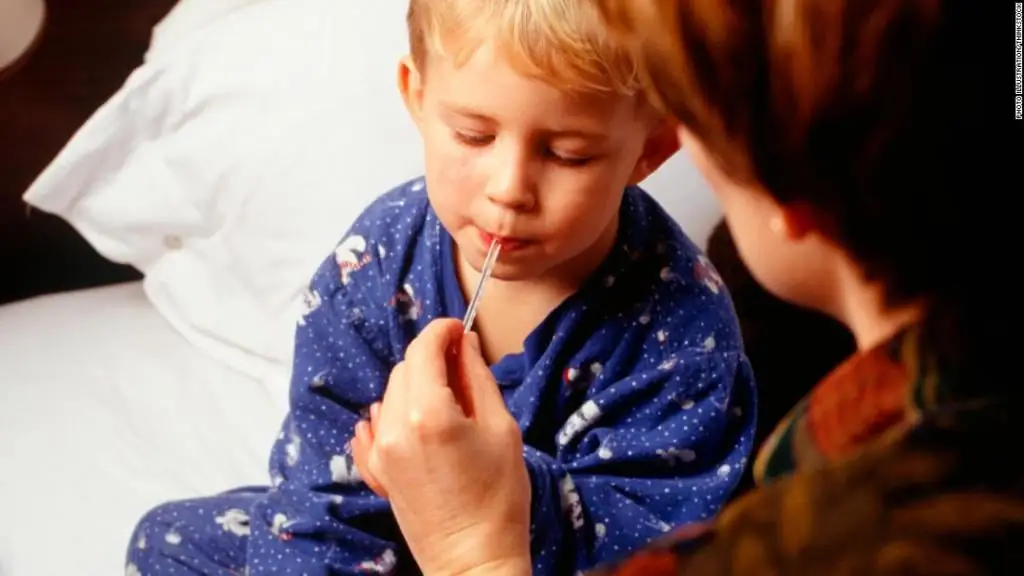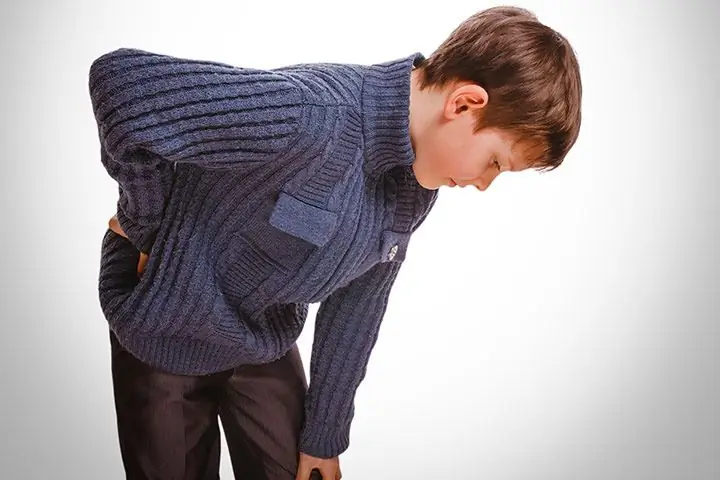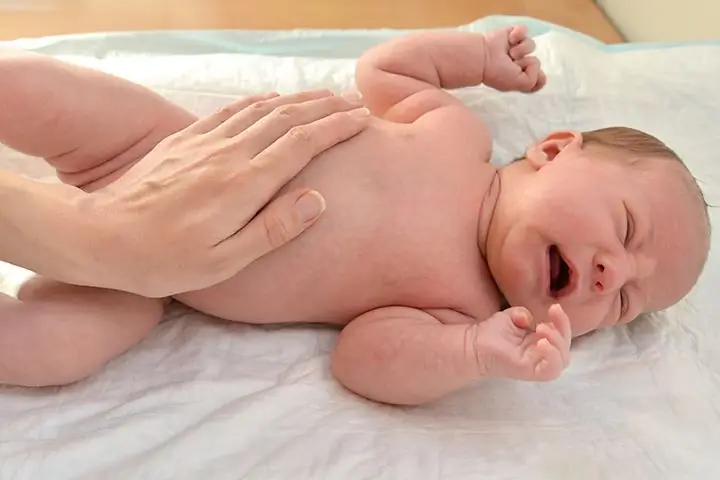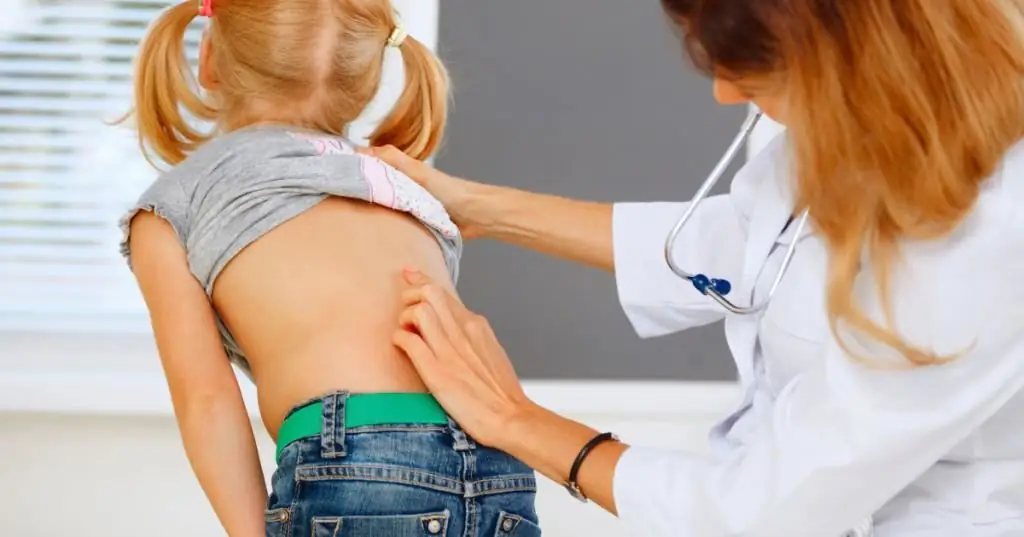- Author Curtis Blomfield [email protected].
- Public 2023-12-16 20:44.
- Last modified 2025-01-23 17:01.
In modern medical practice, cases of myositis in children are often recorded. This pathology is accompanied by an inflammatory process, the foci of which are located in the striated muscles. With timely diagnosis and proper treatment, the prognosis for young patients is favorable. However, it is very important to notice the first signs in time.
Why does myositis develop? Symptoms and treatment, risk factors, diagnostic methods, possible complications - this is the information that every parent should definitely read.
Forms of myositis depending on the cause of development
Of course, the inflammatory process can develop under the influence of various factors that are worth studying:
- Most often, myositis is the result of hypothermia. This happens, for example, if a child spends time in drafts, sits near a working air conditioner, or, hot after playing, goes out into a fresh coolair.
- Often there are cases of post-traumatic myositis of the neck in a child. This is often the result of, for example, a strong blow, bruise and other mechanical damage to the bone and / or muscle apparatus.
- Infectious myositis in children can also hardly be considered a rarity. The inflammatory process in the muscles can be a complication of the flu or other colds, bacterial infections.
- The static-dynamic form of the disease is quite common. In this case, myositis develops if the child maintains an uncomfortable body position for a long time.
Of course, during the diagnosis it is very important to determine what exactly caused the development of myositis, since the choice of therapeutic methods largely depends on this.
Classification scheme. Types of inflammation
We have already considered the main causes of the development of the inflammatory process. Nevertheless, myositis in children can take various forms. If we talk about the duration of the course of the disease, then it stands out:
- Acute form of myositis. The disease proceeds with severe symptoms of intoxication, with proper therapy, it ends in complete recovery after a few weeks.
- The chronic form is said to be in the event that the disease worries the patient for three months or longer. The clinical picture in this case may be more blurred, but in the absence of therapy, the disease leads to the development of a mass of dangerous, sometimes irreversible complications.
Myositis in children may be accompanied bydamage to various muscle groups. Depending on this, the following forms of the disease are distinguished:
- cervical myositis;
- chest;
- dorsal form of the disease (in this case, the muscles of any part of the back can be affected);
- myositis of upper and/or lower extremities;
- inflammation of the muscles of the shoulder girdle.
Naturally, the clinical picture largely depends on which muscle group is affected, what character the inflammatory process acquires.
How does myositis manifest in children?

Of course, the symptoms of the disease directly depend on the localization of the inflammatory process. Diagnosis is also complicated by the fact that a child (especially when it comes to a baby in the first year of life) cannot always complain and explain what exactly worries him.
Acute inflammatory process is accompanied by an increase in body temperature (sometimes up to 39 - 40 degrees). There are other signs of intoxication of the body. The child becomes capricious, sleeps poorly, loses appetite. There is weakness, chills, excessive sweating.
Myositis is accompanied by severe muscle spasm. Hard knots can be felt under the skin. Palpation causes severe pain. The baby suffers from stiffness (for example, it is difficult for him to turn his head, move his limbs, sit). Edema is also a symptom of the disease. Sometimes the skin over the damaged area of \u200b\u200bmuscle turns red, becomes hot to the touch.
Noticing these symptoms, you need to see a specialist as soon as possible. In no case canignore the disease, as there is a possibility of developing dangerous complications.
Cervical myositis: features of the clinical picture

Cervical myositis in children is diagnosed quite often. In this case, the main symptom is neck pain. Unpleasant sensations disturb the child almost constantly in any position. There is constant stiffness in movements, it is difficult for the baby to turn or tilt his head.
It is not uncommon for discomfort to spread to other parts of the body, causing patients to suffer from acute headaches and toothaches. According to statistics, in most cases, inflammation of the neck muscles extends to the shoulder girdle, as a result of which the clinical picture is supplemented by stiffness.
Dorsal myositis

Dorsal myositis is said to be in the event that the foci of inflammation are localized in the back. As a rule, the pathology affects the rectus muscles of the back. The child suffers from stiffness of movements, pain in the back and lower back, muscle spasms. Any activity is accompanied by the appearance of very unpleasant sensations. With such a disease, a small patient, as a rule, feels more comfortable in the supine position.
Thoracic myositis: what symptoms should I look out for?

Inflammation in the thoracic region is also considered a very common form of the disease. In this case, the disease affects not only the structureschest, but also intercostal muscles. As a result of the inflammatory process, even respiratory movements are accompanied by pain. The child constantly suffers from discomfort.
Diagnostic measures

If any alarming symptoms appear, you need to show the child to the doctor. As a rule, a general examination is sufficient to suspect the presence of an inflammatory process. Palpation of the affected areas is accompanied by acute pain. Muscles swell, the skin turns red here, you can feel the muscle nodes.
If myositis has developed in children after the flu or another infectious disease, then blood tests (including biochemical ones) and other additional studies are required. Diagnostic procedures such as X-ray of the affected part of the spine and electromyography are informative.
Possible Complications
Many parents are interested in more information about the symptoms and treatment of myositis in a child. It should be understood that in this case timely diagnosis is extremely important. In the absence of therapy, the disease can lead to very dangerous complications. Constant muscle spasm leads to their gradual atrophy. In turn, this entails degenerative disorders in the formation of the skeleton, increases the risk of developing osteochondrosis and herniated discs in the future.
Medicated treatment

Drug therapy involves the use of various drugs. Anti-inflammatory drugs help withinflammatory process, relieve fever and quickly get rid of pain. Effective in this case are drugs such as Nurofen, Ibufen. They are available in the form of an oral suspension, which is approved for the treatment of children from the first months of life.
The treatment regimen also includes preparations for external use. For example, ointments are considered effective for neck myositis in children (as well as any other muscle group), which contain components such as menthol, camphor and methyl salicylate. Such funds have an irritating and warming effect, allow you to normalize blood circulation and relieve pain. Such drugs as "Mentolatum Balm", "Sanitas", "Menovazin" are considered effective.
Sometimes anti-inflammatory ointments are also used, for example, "Fast-relief", "Finalgon", "Fastum-gel". They quickly eliminate pain, relieve swelling and redness. But such funds can only be used by children over 12 years old. In any case, it is impossible to use medicines arbitrarily, you must first consult with specialists.
Physiotherapy activities

Drug treatment must be supplemented with various physiotherapy procedures:
- It is not uncommon for a small patient to be referred to an osteopath. Of course, the choice of a specialist in this case must be taken with all possible responsibility. The course of treatment allows you to relieve muscle tension, improve blood circulation, remove toxins and eliminate fluid stagnation in tissues.
- Healing massage is also effective. Just a few courses can increase blood flow to the muscles, relieve spasm, improve lymph circulation, activate tissue metabolism and get rid of pain.
- Treatment of myositis is sometimes supplemented with magnetotherapy. Such procedures perfectly cope with the inflammatory process, strengthen muscles, help fight weakness and pain. By the way, such treatment strengthens local immunity and has a positive effect on the functioning of the immune system as a whole. Patients note that the discomfort that accompanies myositis subsides after the first procedure.
- The list of popular techniques for myositis also includes myostimulation. The affected muscles are affected by an electric current, which allows you to normalize metabolism at the cellular level, relieve spasm, cope with pain and inflammation.
Traditional medicine
Of course, rubbing and compresses can be done at home to relieve pain and speed up the healing process:
- It is recommended to apply crushed boiled potatoes on the affected area (it should be warm). After the compress, the skin is rubbed with cologne and wrapped in a warm shawl.
- Cabbage compresses are also considered effective. A leaf of fresh cabbage should be rubbed with laundry soap or natural honey, and then applied to the affected area. The compress is fixed with a bandage or scarf and left overnight.
Of course, you can use such home remedies only with the permission of your pediatrician.
Prevention of myositis in children. Patient Predictions
Prognosis for such a disease is favorable, but only with the right therapy. Refusal of treatment is fraught with consequences: the pain subsides over time, but the muscle structure is disturbed, which in the future may lead to the development of an intervertebral hernia.
Prevention of such a disease is quite simple. Since myositis often develops in children after SARS, it is worth remembering that all infectious diseases should be treated in time. It is recommended to avoid drafts, especially if the child is hot after active play.
It is important to monitor the weight and physical development of the child. As you know, regular sports activities and therapeutic exercises contribute to the formation of a stable muscular corset. It is not recommended for a small patient to sit in one position for hours (even when it comes to studying). Every 30-40 minutes you need to do at least a light warm-up. Active games, attending sports sections, in a word, an active lifestyle will positively affect the development of the child.






